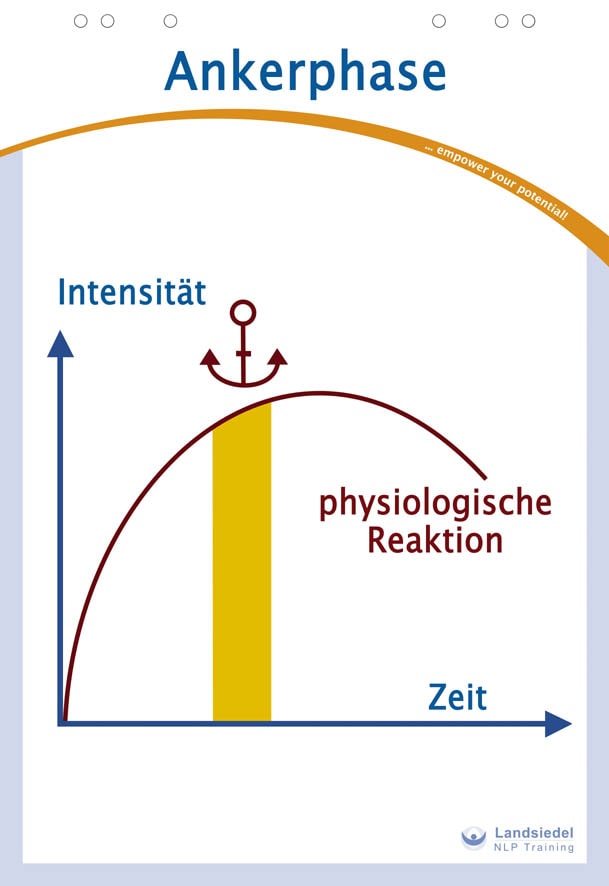Anchoring
Setting an anchor means deliberately linking an external stimulus with an internal experience. Anchors can be created using any sensory channel — images, sounds, feelings, smells, or tastes.
Anchors can be set and triggered by oneself (self-anchors) or by others (external anchors).
“Firing” an anchor means reactivating the stimulus to reproduce the anchored state or experience.
Learn more in our Podcast Episode: Anchoring and Setting Anchors. Enjoy listening!
Standard Steps
- Recall an intense, associated experience
- Set the anchor just before the emotional peak
- Separator: change the internal state
- Test: trigger the anchor again
Components of Effective Anchors (T.I.G.E.R.)

Timing of the Anchor
A strong anchor follows the emotional intensity curve. Begin setting the anchor when the emotional arousal is just before its peak and maintain it as the intensity increases. It’s important to stop in time to avoid linking the downward curve of the emotion to the anchor.
Intensity of the State
To create a powerful anchor, the emotional state being anchored must be strong. Anchoring doesn’t create a state — it preserves one. You can only anchor what is already present.
Accuracy of Repetition
If the anchor location is not exactly repeated, the response may not trigger or may lack full intensity.

Uniqueness of the Anchor
If the same anchor is used for different emotional states, those states will mix. To make an anchor long-lasting, choose one that is not constantly triggered by everyday experiences. For example, a handshake is not a good anchor because it’s used too frequently and associated with many contexts.
Purity of the State
If someone recalls a positive experience but simultaneously thinks about how it ended, the feeling of sadness will be anchored too. Ensure that the state you’re anchoring is as “pure” and undiluted as possible.
Learn more about anchoring techniques in our online seminar recording with trainer Joerg-Friedrich Gampper.

 Deutsch
Deutsch English
English Français
Français 中文
中文 Español
Español नहीं
नहीं Русский
Русский